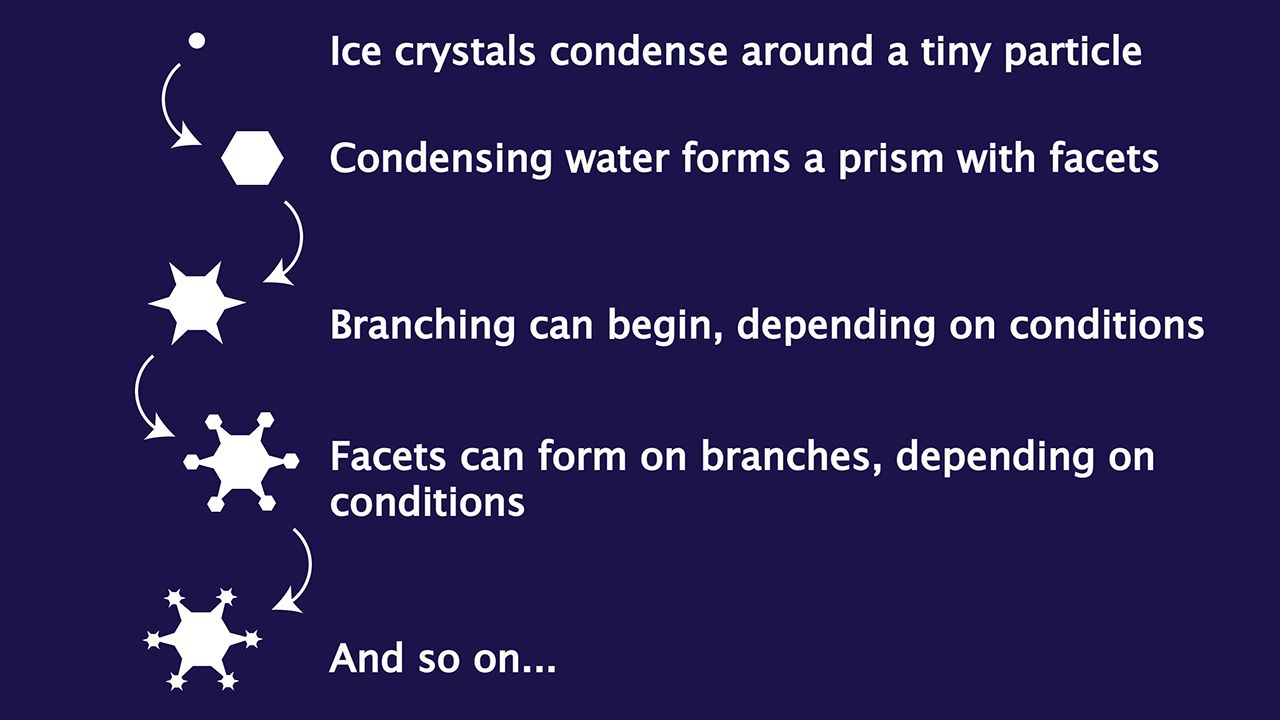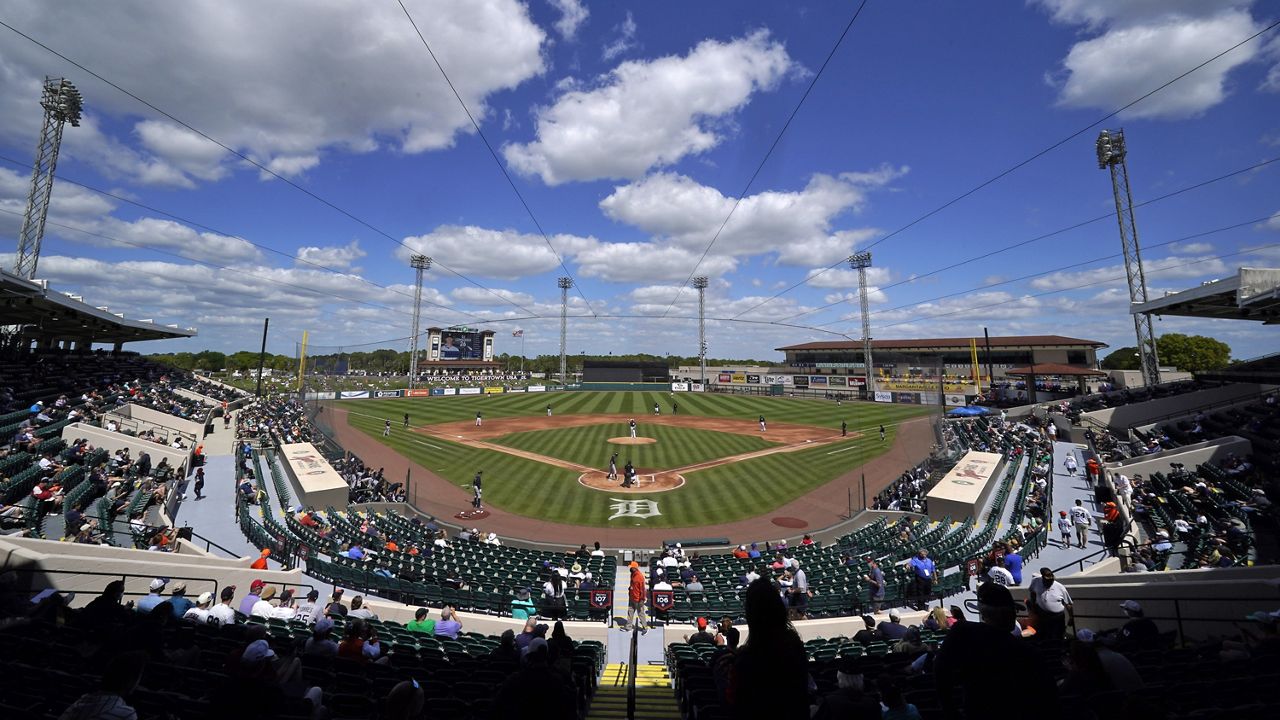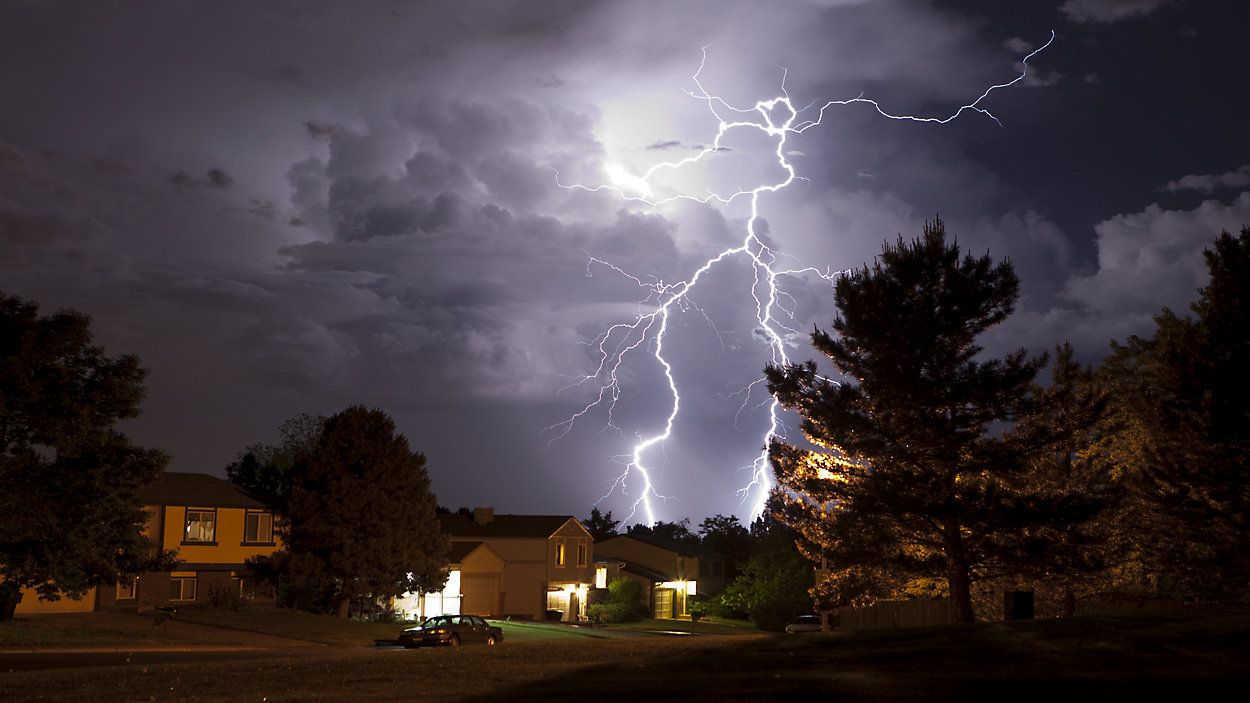Snowflakes are one of the most beautiful parts of snow. Even though the pattern differs from one snowflake to the next, they all form the same way.
Snowflakes form in clouds where the temperature is below freezing.
The water vapor in the cloud condenses (changes from a gas to a solid) on a particle. That particle can range from dust to a pollen grain to a soot particle to even a microscopic metal bit from car exhaust.
Once the water vapor attaches itself, it slowly grows into a crystal. That crystal then moves inside of the cloud and grows into a snowflake as more water vapor attaches to the crystal.
Once the snowflake is heavy enough, it falls to the ground.
It all has to do with chemistry.
Two hydrogen atoms and one oxygen atom make up a water molecule, with the hydrogen atoms having a more positive charge and the oxygen atom a negative.
When multiple water molecules find each other, they rearrange themselves so that oppositely charged molecules pair together. A hexagonal shape forms as a result.
The changes in temperature and the amount of water in the air can change how the snowflake grows.
It can either form facets (six-sided prisms), branches, or both!

There are different conditions at the microscopic level in the atmosphere, and the order in which snowflakes experience the changing temperature, moisture and time in each area determines their shape.
That’s why it is unlikely you’ll ever find two identical snowflakes, because it’s impossible for two snowflakes to experience the same temperature and moisture change throughout a cloud.
Shelly Lindblade - Weather Producer
Shelly Lindblade is a weather producer for Spectrum News. She graduated from Florida State University with a Bachelor's of Science in Meteorology and started her career in front of the camera as a broadcast meteorologist. After 4 years of TV broadcasting, she now loves updating the public on the latest weather news from behind the scenes.









